Animals
Mayor Max
In 2012, the residents of Idyllwild, California elected Max as their mayor. He was a golden retriever. Tragically he died of cancer a year later, but the people of Idyllwild agreed that Maximus Mighty-Dog Mueller II, aka Mayor Max II, could complete his term of office. The new Max was subsequently granted a perpetual term as mayor. So he's still in charge there.Check out the official Mayor Max website.
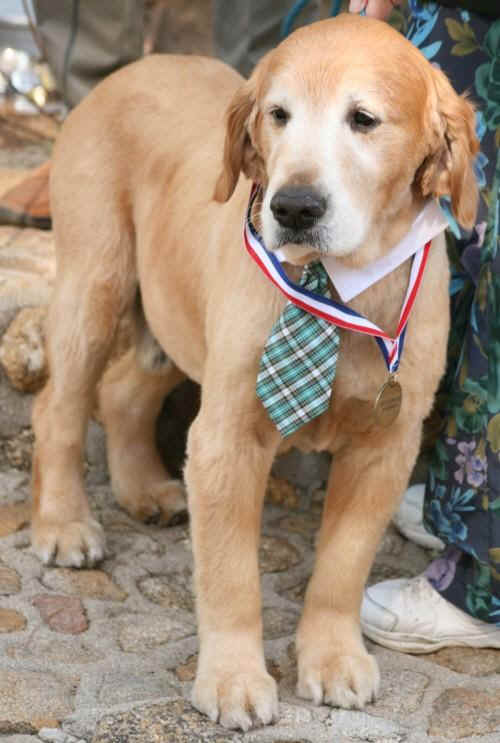
Mayor Max I

Posted By: Alex - Mon Jun 12, 2017 -
Comments (3)
Category: Animals, Politics
ME Pearl and her Opossum
She's been posting videos to YouTube for the last six years featuring her opossum and sometimes a squirrel. Her two most viewed videos are below. You can also check out her website.
Posted By: Alex - Sun Jun 11, 2017 -
Comments (2)
Category: Animals, Video
Refrigerated Camels
Instead of using refrigerated trucks to deliver medical supplies to people who live in the deserts of Africa, inventors have built solar-powered refrigerators that can be carried by camels, and so the medicines are delivered via refrigerated camel.Apparently it wasn't that easy to build a camel-carried refrigerator. It had to be lightweight, but also sturdy enough to survive the motion of being on the camel as well as the extreme desert conditions.
More info: ABC News, inhabitat.com


Posted By: Alex - Wed May 31, 2017 -
Comments (4)
Category: Animals, Inventions, Medicine, Transportation, Africa
A Brief History of Westernized Snake Dances
Choose your favorite.I believe that "Janik and Amaut" are really Harold and Lola Leibman, as seen in the final clip. More about their eccentric careers here.
Posted By: Paul - Tue May 30, 2017 -
Comments (2)
Category: Animals, Sex Symbols, Dance
Drug-Carrying Pigeons
Same method, 95 years apart.
The Pittsburgh Press - Mar 8, 1922

Pigeon caught with backpack of drugs
BBC News - May 25, 2017
Posted By: Alex - Fri May 26, 2017 -
Comments (0)
Category: Animals, Drugs
Long arm saves dolphin
February 1978: A dolphin named Dr. Spock who lived at Marine-World swallowed a 3-inch bolt. The animal doctors there didn't have any instruments long enough to reach into the dolphin's stomach and remove the bolt. So, hoping to avoid surgery, they called up basketball player Clifford Ray of the Golden State Warriors and asked him if he would be willing to use one of his four-foot long arms to reach into Dr. Spock's stomach. Ray hurried over, removed the bolt, and saved Dr. Spock's life. Ray said that Dr. Spock later always recognized him when he visited Marine World and would come over to say hello.More info: SFGate, NY Times
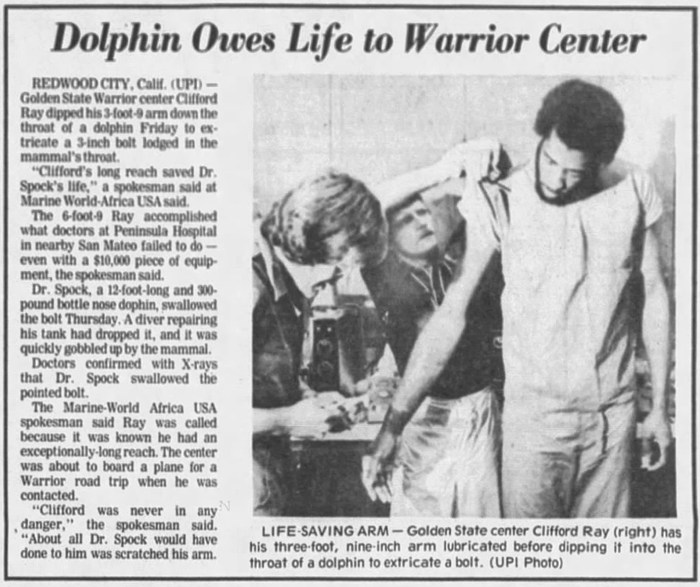
Muncie Star Press - Feb 25, 1978
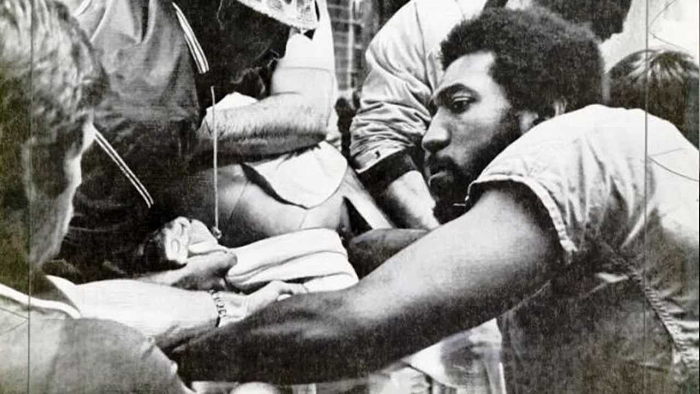
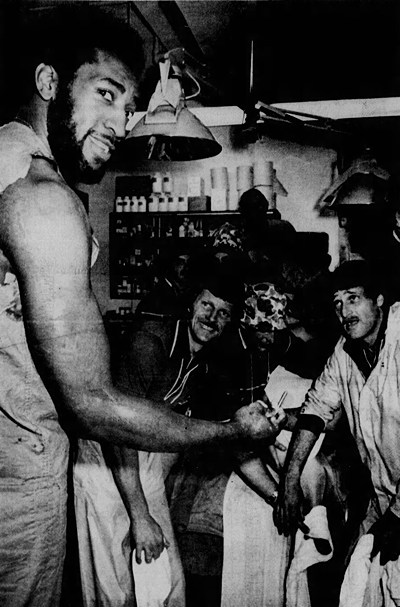
Ray shows off the bolt to his teammates
Hattiesburg American Sun - Feb 26, 1978
Posted By: Alex - Tue May 16, 2017 -
Comments (7)
Category: Animals, 1970s
Frontier Circus
In 1962, variations on the popular Western genre reached new and unlikely permutations.
Wikipedia entry here.
Posted By: Paul - Sat May 13, 2017 -
Comments (3)
Category: Animals, Clowns, Fairs, Amusement Parks, and Resorts, Regionalism, Television, 1960s
Obese, the Freak Fat Mouse
A fat mouse that was bred at Jackson Laboratory in Bar Harbor, Maine during the late 1940s/early 1950s. The researchers called him "Obese," or "O.B." for short. As in, that was his name, not just a description of what he was. Fat mice bred from Obese were used in the study of diabetes and obesity.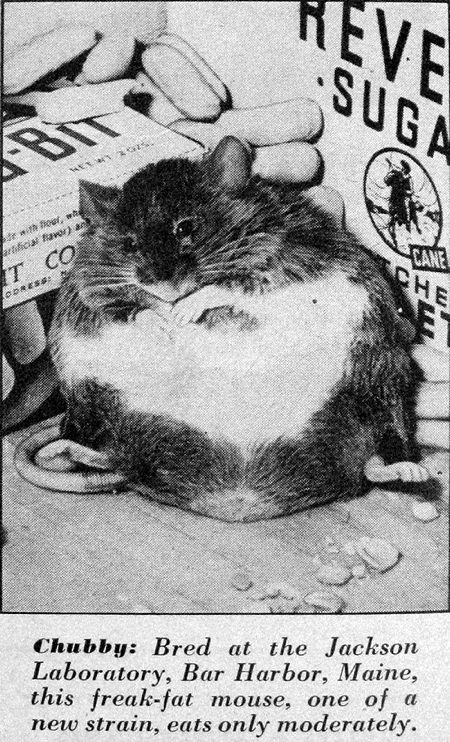
Newsweek - Apr 2, 1951
Ellen Ruppel Shell tells the story of Obese in her book The Hungry Gene: The Inside Story of the Obesity Industry:
An animal caretaker first spotted the creature huddled in a corner of its cage, grooming itself. It was furrier than most, but what really stood out was the size of the thing — it was hugely fat. The caretaker alerted doctoral candidate Margaret Dickie, who diagnosed the mouse as "pregnant." But there were problems with this theory. For one thing, the mouse never delivered a baby. And on closer inspection, it turned out to be male. The fat mouse ate three times the chow eaten by a normal mouse, pawing for hours at the bar of the food dispenser like an embittered gambler banging away at a recalcitrant slot machine. Between feedings it sat inert. It seemed to have been placed on this earth for no other purpose than to grow fat.
There had been other fat mice. The agouti mouse, named for its mottled yellow fur similar to that of the burrowing South American rodent, is, in its "lethal yellow" mutation, double the weight of the ordinary variety. But the fat agouti was svelte compared to the newcomer. This mouse was outlandish, a joke, a blob of fur splayed out on four dainty paws like a blimp on tricycle wheels. Rather than dart around the cage in mousy abandon, it was docile, phlegmatic, as though resigned to some unspeakable fate. Dickie and her colleagues christened the mouse "obese," later abbreviated to "ob," and pronounced "O.B.," each letter drawn out in its own languid syllable.
Posted By: Alex - Mon May 08, 2017 -
Comments (2)
Category: Animals, Science, 1940s, 1950s
Elk Tooth Charm
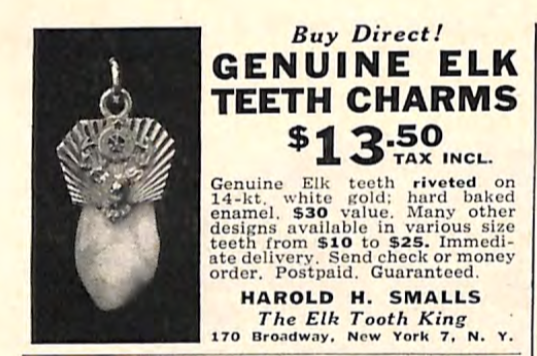
From the June 1948 issue of--what else?--the ELKS MAGAZINE.
Posted By: Paul - Sun Apr 16, 2017 -
Comments (0)
Category: Animals, Jewelry, 1940s, Teeth
The Los Angeles Pet Memorial
I was briefly in L.A. over the weekend, so I took the time to visit the L.A. Pet Memorial, my curiosity about it having been piqued after posting recently about how Blinky the Friendly Hen was buried there. It's up in northwest L.A., in Calabasas. If you're ever in the area, and want to do some sightseeing that's more off the beaten track, it's worth checking out. Some of the highlights below:
The coffin showroom, featuring pet-sized coffins
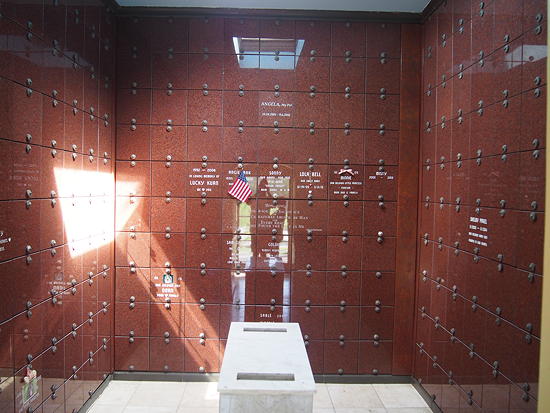
Inside the mausoleum
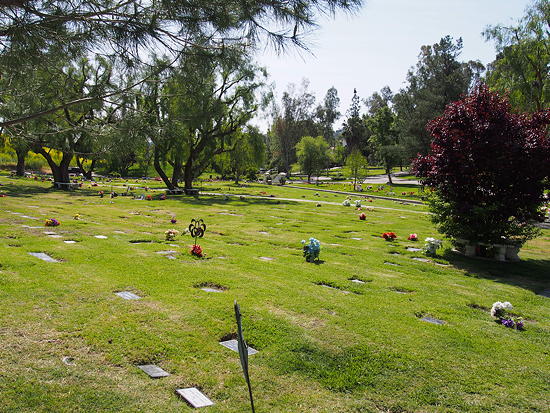
The grounds spread out over 8 acres. So the park is pretty big.
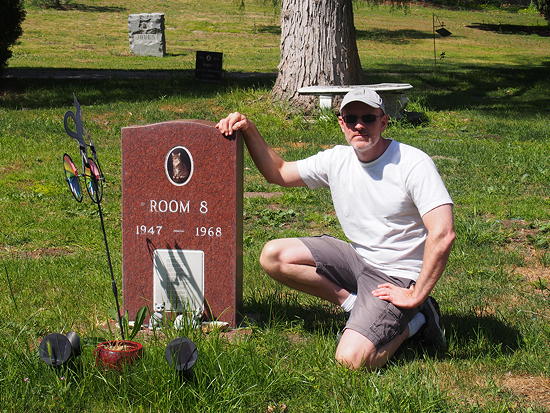
Yours truly by the grave of "Room 8" — the cat that lived at the Elysian Heights Elementary School. He was once known as the most famous cat in America.
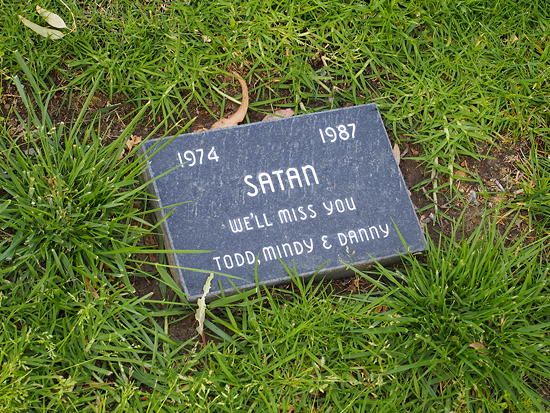
Satan — We'll Miss You
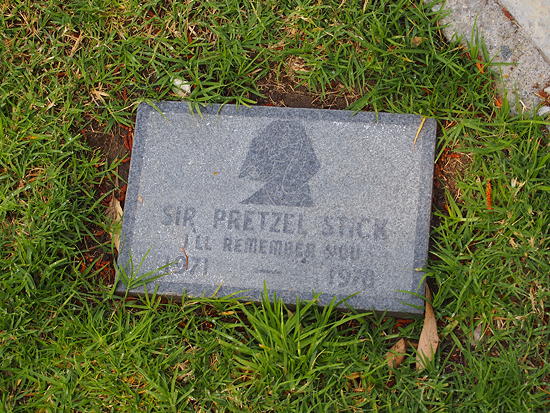
Sir Pretzel Stick — I'll Remember You
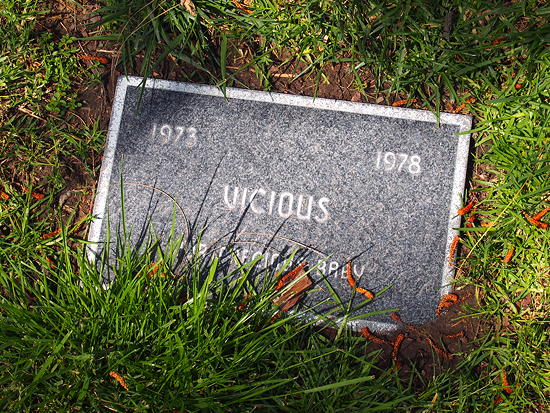
Vicious — Our Precious Baby
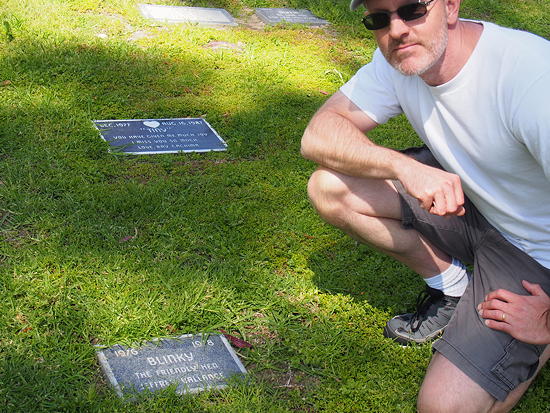
I finally found the marker for Blinky the Friendly Hen. The front office didn't have a guide to the graves, so you have to find them on your own. Blinky turned out to be in the area directly across from the front office, about 8 rows back.
There's a number of other famous animals buried at the park, including Tawny the MGM lion, Hopalong Cassidy's horse, and one of the dogs from the Little Rascals. Plus, the pets of many celebrities are there — Charlie Chaplin's cat, Humphrey Bogart's dog, etc.
Posted By: Alex - Tue Apr 11, 2017 -
Comments (6)
Category: Animals, Death

| Who We Are |
|---|
| Alex Boese Alex is the creator and curator of the Museum of Hoaxes. He's also the author of various weird, non-fiction, science-themed books such as Elephants on Acid and Psychedelic Apes. Paul Di Filippo Paul has been paid to put weird ideas into fictional form for over thirty years, in his career as a noted science fiction writer. He has recently begun blogging on many curious topics with three fellow writers at The Inferior 4+1. Contact Us |




